Toyota RAV4 Plug-in review: an expensive way to save money

Think ‘hybrid’ and most people picture a Toyota Prius. Play word association with ‘plug-in hybrid’, though, and a Mitsubishi Outlander PHEV will probably pop into your head. Yeah, sorry about that…
The Outlander looks gopping, has a dated interior and is utterly forgettable to drive. Its success, frankly, was almost entirely due to low tax liability and the £2,500 Plug-in Car Grant (PiCG). When the government ended the PiCG in October 2018, Mitsubishi announced its gradual withdrawal from the UK just 18 months later.
The worst thing about the Outlander, though, is it’s not very efficient. Sure, charge up before each journey and you have 28 miles of emissions-free electric range. But after the batteries are depleted, you’re left with a 1,890kg SUV powered by a 2.4-litre petrol engine. Hardly a route into Greta’s good books.
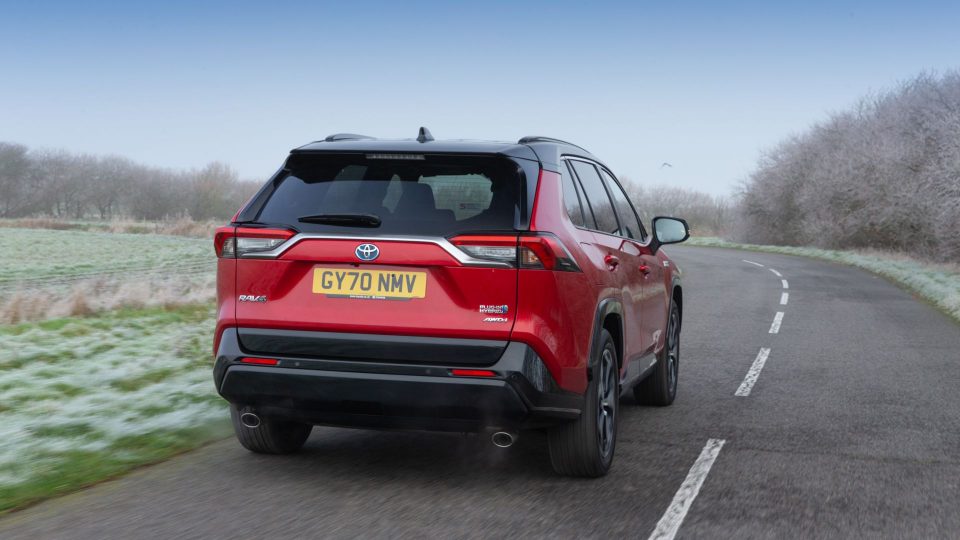
Which brings us – in a roundabout way – to the new RAV4 Plug-In. Yes, it’s still a relatively large and heavy vehicle, but let’s give Toyota a pass on that for now – SUVs are what sells, after all. The key point is that it defaults to being a hybrid (what Toyota calls a ‘self-charging hybrid’, like a Prius), when the batteries run flat. And that makes it very efficient indeed.
You’re already familiar with the RAV4. Launched in 2018, this mid-size SUV squares up against the Ford Kuga, Peugeot 3008, Honda CR-V and Volkswagen Tiguan and many more. Until now, it was available solely as a 215hp hybrid (219hp with four-wheel drive), with prices from £36,170.
Unlike the Prius and Prius Plug-in, which both serve up an identical 122hp, the RAV4 Plug-in is markedly more powerful than its standard sibling. A 2.5-litre petrol engine, two electric motors and a 18.1kWh battery produce a combined 306hp: good for 0-60mph in 6.0 seconds (only 0.5sec behind Toyota’s GR Yaris hot hatch).
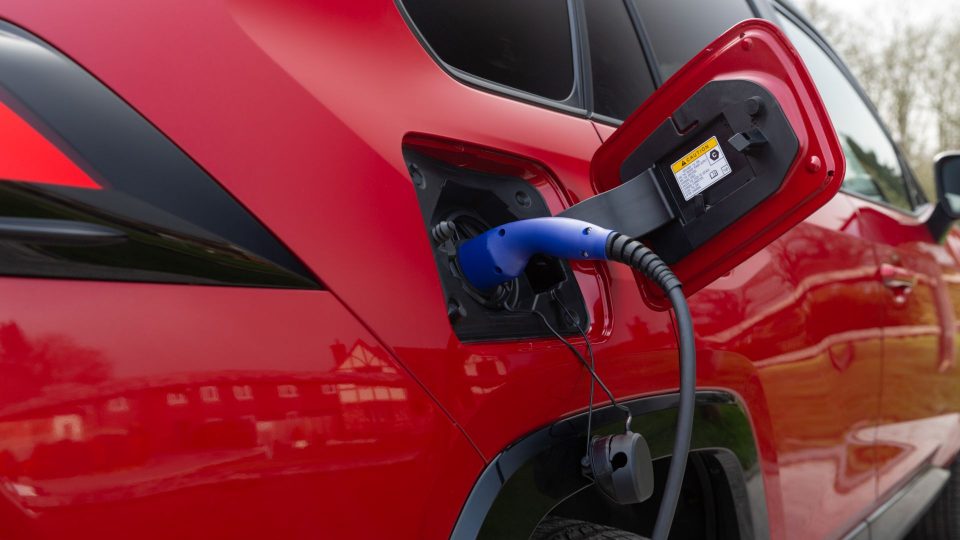
However, the Plug-in is also pricier than other RAV4s: a knuckle-biting £47,395, in fact – or £50,895 for the top-spec Dynamic Premium. That pitches it against some formidable premium players, such as the Audi Q5, Jaguar F-Pace and Mercedes-Benz GLC – and within spitting distance of the larger Lexus RX.
Even so, Toyota confidently predicts around 4,000 UK sales a year, mostly to fleet buyers, once production is fully underway.
Let’s look at the efficiency numbers first, as any eagle-eyed fleet manager surely will. Here, the RAV4 plays its ace card, with an incredible 282.5mpg and CO2 emissions of just 22g/km.
Those stats come with an asterisk and some small print, though, because they’re based on the official WLTP fuel economy test. Given the Toyota can travel 46.5 miles before its petrol engine cuts in, it completes most of the test cycle on electricity alone – hence its Scrooge-like fuel consumption.
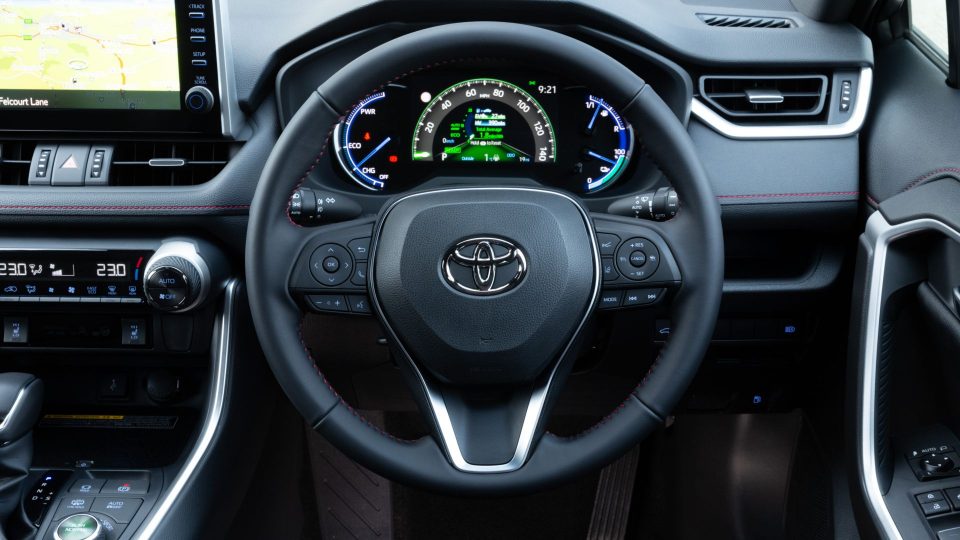
That’s true for all plug-in hybrids, of course. And for what it’s worth, the RAV4 is convincingly greener than the Outlander PHEV, which manages 139.7mpg, 46g/km and 28 miles of electric range. Just be aware that you need to plug in (the clue is in the name) to achieve anything close to triple-digit miles per gallon. Charging takes about 2.5 hours with a wallbox or 7.5 hours with a three-pin plug.
But here’s the kicker, particularly for company car drivers; no matter how often you charge it, the RAV4 is extremely cheap to tax. The Dynamic model attracts a seven percent Benefit-in-Kind (BiK) rate for 2021/22, meaning a 20 percent taxpayer stumps up £663 and a 40 percent taxpayer owes £1,326.
Compare that to 37 percent BiK for an Audi Q5 40 TDI diesel in S line trim, which will cost its driver £3,323 or £6,646 respectively.
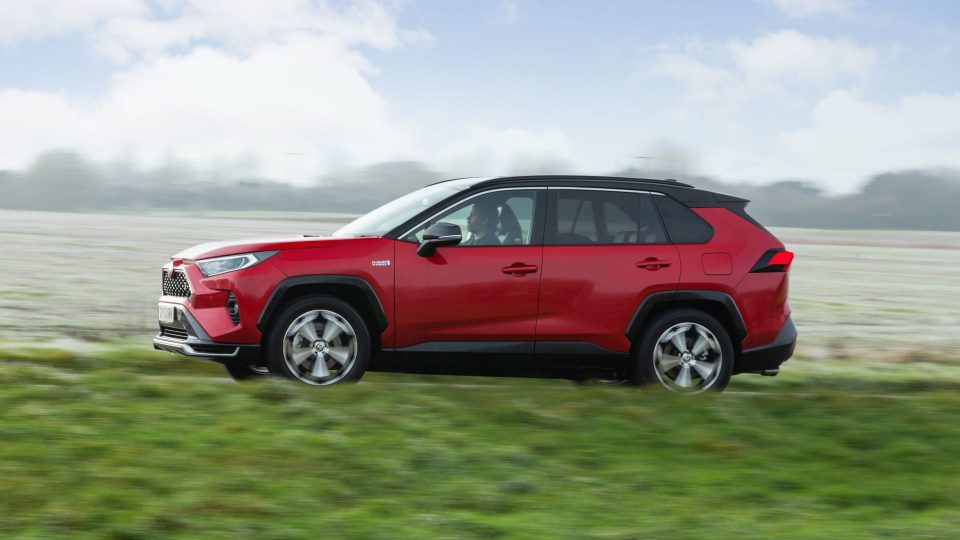
Pre-pandemic, car launches were generally based from five-star hotels in sunny southern Europe. This time, a car park in Crawley will have to do – and Storm Christoph is dutifully doing his best. Still, I’m inordinately grateful simply to leave the house.
The RAV4 is no Range Rover Evoque in the style stakes, but its jutting jaw, broad ‘nostrils’ and squared-off wheelarches look suitably rugged. Both versions of the Plug-In wear smart 19-inch machine-faced alloys, too.
Standard equipment is pretty ‘kitchen sink’ – as you hope for this price – and includes adaptive cruise control, dual-zone air con, navigation, a reversing camera, automatic lights/wipers, heated front and rear seats, wireless phone charging, Apple CarPlay and Android Auto connectivity, plus a powered tailgate.
Spending the extra £3,500 for Dynamic Premium adds leather seats, a panoramic sunroof, a nine-speaker JBL sound system and a head-up display.
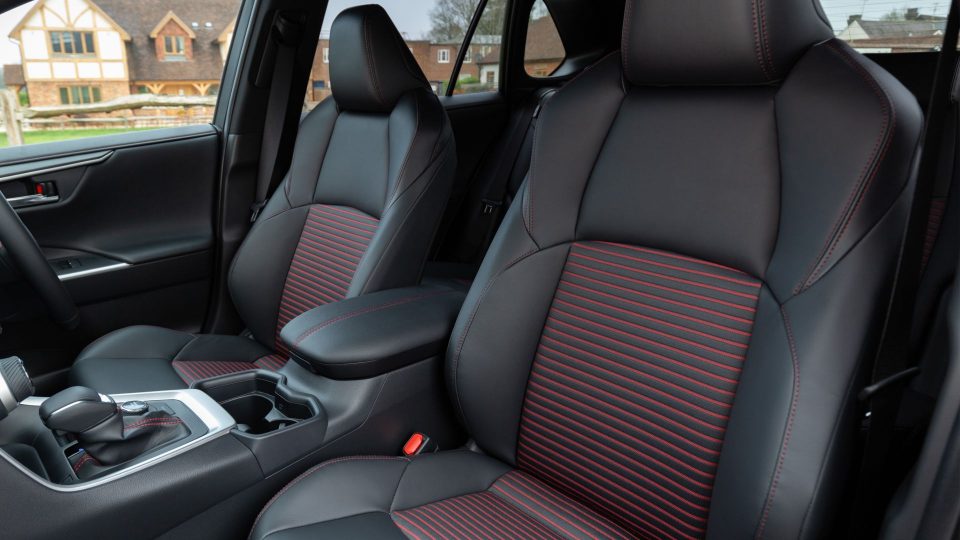
Despite industry-leading reliability, Toyota has often fallen down when it comes to perceived quality: those soft plastics and tactile touch-points the Germans do so well.
The RAV4’s interior won’t prompt any hurried meetings in Ingolstadt or Stuttgart, but it feels more ‘premium’ than you’d expect. There’s plush leather on the steering wheel and gear lever, plus fingertip-friendly rubber for the rotary controls and interior door handles. Blue ambient lighting around the dashboard and cupholders is another classy touch.
The driver display shows the EV range (44 miles in today’s cold weather), along with total range including the contents of the fuel tank. I press the start button, shift the automatic ’box into ‘D’ and glide quietly away.
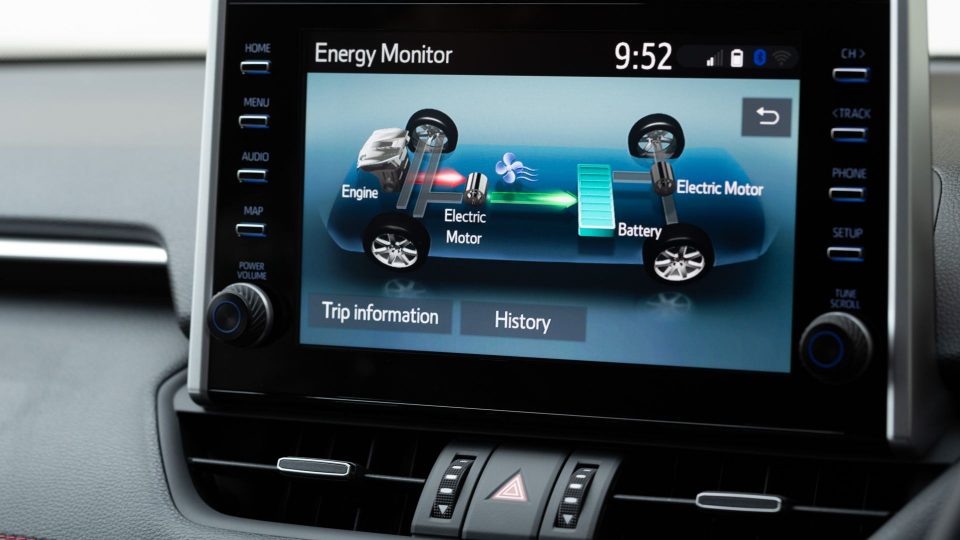
Those first 44 miles (actually a bit less, thanks to my heavy right foot) are completed in typical EV style, which is to say almost silently, with ever-present electric torque offering lively response and swift acceleration.
As the range readout reaches zero and the RAV4 switches automatically into hybrid (HV) mode, I brace myself for the familiar drone of a petrol engine and CVT gearbox – but it never comes.
Because the Plug-in’s engine is essentially a generator, and doesn’t directly drive the wheels, it doesn’t need to rev as hard (around 1,300rpm at 37mph, versus nearly 3,000rpm for the standard hybrid). Factor in extra sound insulation and acoustic front window glass and you have a mainstream SUV with a refinement of a fully-paid-up luxury car.

The RAV4 also rides well, with good body control and damping that takes the broken B-roads of West Sussex in its stride. Toyota says the floor-mounted battery pack helps, lowering the car’s centre of gravity and making it ‘even more fun to drive’.
Erm, steady on there. The RAV does have a Sport mode, although it only affects the throttle. And its steering, while nicely weighted, is hardly alive with feedback.
Nope, after the initial novelty had worn off, I was rarely tempted to use the Plug-in’s performance. It simply isn’t that sort of car, and the sight of the economy gauge leaping from ‘CHG’ to ‘PWR’ pricked my guilty conscience. It feels like Toyota has missed a trick by not introducing stronger brake regeneration to encourage one-pedal driving (and boost economy). It would surely suit the RAV4’s easygoing nature.
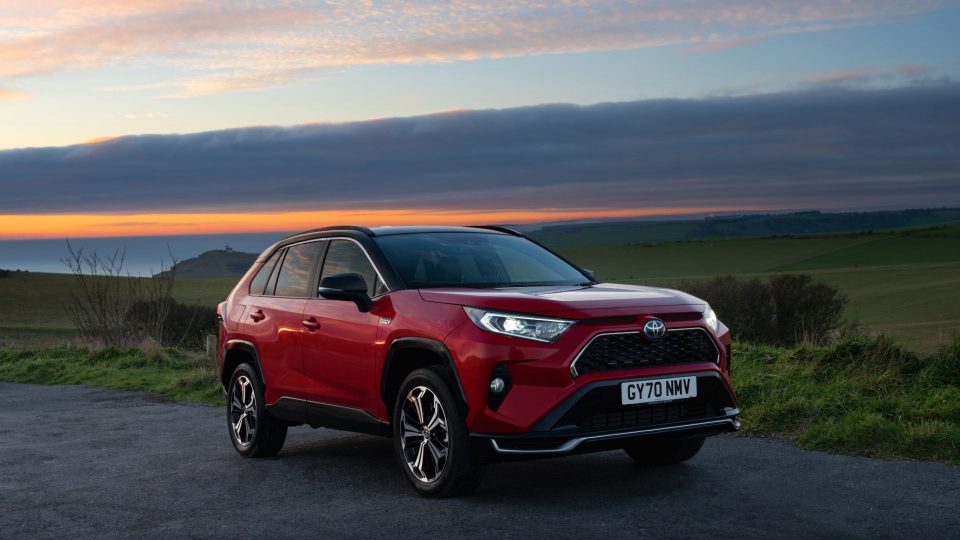
Heading back to Crawley through high winds and heavy rain, I find myself wondering if Toyota has missed a trick full-stop. A RAV4 Plug-in with the same 219hp power output as the standard RAV4 4WD hybrid, but priced more affordably, would surely make more sense.
After all, who really needs 306hp in an otherwise mild-mannered and eco-oriented family SUV? Especially if the result is a price tag knocking on the door of £50,000.
Toyota talks about this RAV4 as the flagship of its hybrid range, so perhaps cheaper plug-in SUVs will follow. Until then, its appeal will mostly be limited to tax-conscious company car drivers. If they’re trading up from a certain Mitsubishi, it will be a pleasant surprise.
Tim Pitt writes for Motoring Research
PRICE: £47,395
0-62MPH: 6.0sec
TOP SPEED: 112mph
CO2 G/KM: 22
MPG COMBINED: 282.5